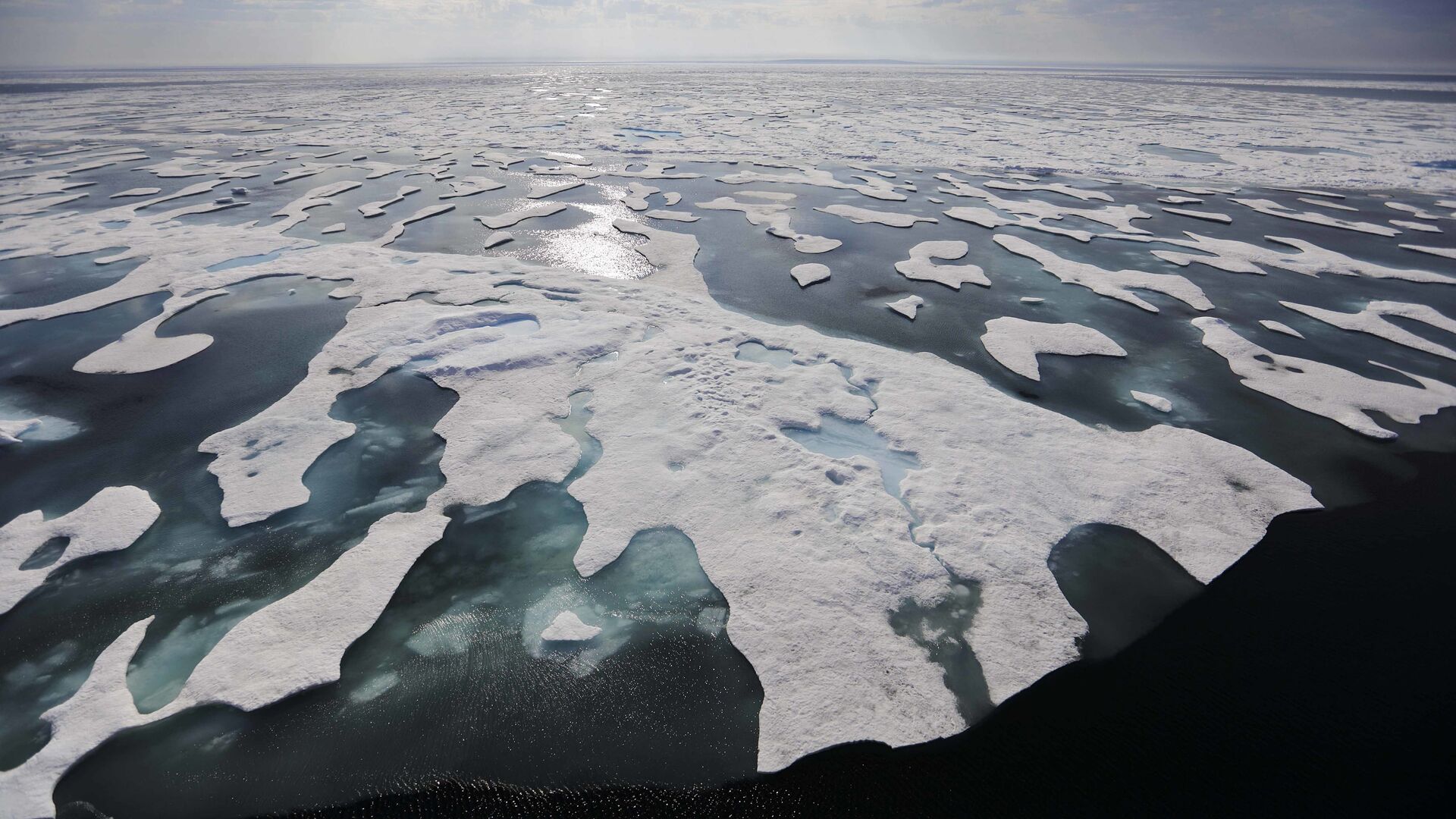https://sputnikglobe.com/20220316/deep-sinkholes-found-deep-beneath-arctic-ocean-scientists-speculate-about-what-caused-them-1093927245.html
Deep 'Sinkholes' Found Deep Beneath Arctic Ocean, Scientists Speculate About What Caused Them
Deep 'Sinkholes' Found Deep Beneath Arctic Ocean, Scientists Speculate About What Caused Them
Sputnik International
The discovery was made by a team of researchers who surveyed the seafloor of the Beaufort Sea between 2010 and 2019 using advanced mapping tech. 16.03.2022, Sputnik International
2022-03-16T12:50+0000
2022-03-16T12:50+0000
2022-03-16T12:50+0000
science & tech
arctic ocean
craters
permafrost
https://cdn1.img.sputnikglobe.com/img/106788/63/1067886364_0:296:6001:3671_1920x0_80_0_0_3e6e459b64a84d403c0c74d302b94b91.jpg
Sizeable craters, some of them reaching 90 feet in depth, have emerged beneath the waves of the Arctic Ocean.Scientists suggest that these craters are the product of submerged permafrost on the edge of the Beaufort Sea thawing, and that the change is being caused by “retreating glaciers from the last ice age” rather than by climate change, according to Newsweek.Their findings show the emergence of large depressions with steep sides at depths between 400 and 500 feet.While the media outlet notes that organic matter decomposing within the thawing permafrost may cause ground to literally explode due to pressure caused by the release of methane and other greenhouse gasses, Paull said his team does not think the craters they observed were formed due to such processes.The scientist also said that he and his colleagues were shocked by their discovery, and that the craters turned out to be larger than they expected.
https://sputnikglobe.com/20211002/thawing-arctic-permafrost-could-spread-nuclear-waste-new-viruses-study-warns-1089602116.html
arctic ocean
Sputnik International
feedback@sputniknews.com
+74956456601
MIA „Rossiya Segodnya“
2022
News
en_EN
Sputnik International
feedback@sputniknews.com
+74956456601
MIA „Rossiya Segodnya“
Sputnik International
feedback@sputniknews.com
+74956456601
MIA „Rossiya Segodnya“
science & tech, arctic ocean, craters, permafrost
science & tech, arctic ocean, craters, permafrost
Deep 'Sinkholes' Found Deep Beneath Arctic Ocean, Scientists Speculate About What Caused Them
The discovery was made by a team of researchers who surveyed the seafloor of the Beaufort Sea between 2010 and 2019 using advanced mapping tech.
Sizeable craters, some of them reaching 90 feet in depth, have emerged beneath the waves of the Arctic Ocean.
Scientists suggest that these craters are the product of submerged permafrost on the edge of the Beaufort Sea thawing, and that the change is being caused by “retreating glaciers from the last ice age” rather than by climate change, according to Newsweek.
This development came to light after a team of researchers led by Charles K. Paull, a senior scientist at California's Monterey Bay Aquarium Research Institute, employed advanced mapping tech to perform surveys of the Beaufort Sea seafloor between 2010 and 2019, trying to gauge changes produced by the thawing permafrost.
Their findings show the emergence of large depressions with steep sides at depths between 400 and 500 feet.

2 October 2021, 11:40 GMT
While the media outlet notes that organic matter decomposing within the thawing permafrost may cause ground to literally explode due to pressure caused by the release of methane and other greenhouse gasses, Paull said his team does not think the craters they observed were formed due to such processes.
"The evidence suggests that the submarine features we observed forming are essentially sink-holes and retreating scarps, collapsing into void space left behind by the thawing of ice-rich permafrost," he explained.
The scientist also said that he and his colleagues were shocked by their discovery, and that the craters turned out to be larger than they expected.


